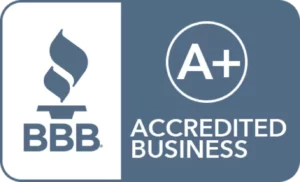The IRS allows any entity type, including an LLC, to establish a Solo 401(k) plan. The Solo 401(k) plan is essentially a regular 401(k) plan covering a business with no full-time employees other than the owner(s) or their spouse(s). The Economic Growth Tax Relief and Reconciliation Act of 2001 (EGTRRA) helped accelerate the popularity of the plan. Additionally, EGTRRA added employee deferrals, the loan feature, and Roth contributions to the Solo 401(k) plan making it a far better option for the self-employed or small business owner than a SEP IRA.
- If you qualify, any type of entity can adopt a Solo 401(k)
- A Multiple Member LLC as an LLC which is owned by two or more members
- In addition to the employee deferral, one can make a 25% contribution as the employer
Can a Multiple Member LLC Establish a Solo 401(k) Plan?
The Solo 401(k) plan may be adopted by any multiple-member LLC with a U.S. business. In general, to be eligible to benefit from the Solo 401(k) Plan, a multiple-member LLC, also known as a partnership, must meet just two eligibility requirements:
(i) The presence of self-employment activity.
(ii) The absence of full-time employees.
The following types of employees may be generally excluded from coverage:
- Employees under 21 years of age
- Employees who work less than 1000 hours annually
- Three consecutive years of more than 500 hours
- Union employees
- Nonresident alien employees
In sum, so long as the multiple-member LLC has no full-time employees other than the owner or spouse (not treated as an employee under ERISA), the business is eligible to adopt a Solo 401(k) plan.
What is a Multiple Member LLC?
A multiple-member LLC is an LLC that is owned by two or more members. Obviously, a single-member LLC is an LLC owned by just one party. From a federal income tax standpoint, a multiple-member LLC is treated as a partnership. Both types of LLCs are pass-through entity-types meaning they are not subject to an entity level tax, like a C Corporation.
It does not matter if the LLC is owned by individuals or a retirement plan; because it is treated as a partnership for federal income tax purposes, a multi-member LLC is required to file a U.S. partnership tax return (Form 1065) as well as the corresponding state return. The LLC’s earnings would not be subject to an entity-level tax; instead, taxes “flow-through” to the members.
In sum, a multiple-member LLC must file an annual information return to report the income, deductions, gains, losses, etc., from its operations, but it does not pay income tax. Instead, it passes profits or losses to its members or partners. Each LLC member reports his or her share of the LLC’s income or loss on their personal tax return via a K-1.
Members of an LLC are not employees and shouldn’t be issued a Form W-2. The LLC must furnish copies of Schedule K-1 (Form 1065) to the partner. Pursuant to partnership tax rules, a member’s share of the LLC’s net profit or loss is reported on Schedule K-1 as a “distributive share” item, whereas compensatory amounts that are determined without reference to the LLC’s net income are reported on the K-1 as “guaranteed payments.”
In other words, the amount that can be contributed to a Solo 401(k) plan is based on the guaranteed payment and not the net profits of the LLC. Generally, neither of these amounts is subject to withholding of income tax or FICA, and the member is responsible for paying the income tax and self-employment tax directly (greatly complicating the worker’s tax situation).
Solo 401(k) Contribution Deadline – Multiple Member LLC
A multiple member LLC reports income on IRS Form 1065. The form is due March 15 of the following year, or September 15 if an extension is filed. A guaranteed payment paid to a member of an LLC for compensation of services is akin to a W-2. Hence, a member of an LLC should know their annual compensation amount by December 31.
Accordingly, a member who received a guaranteed payment on a K-1 and makes employee deferrals should elect to make those contributions by December 31. It is good practice to have the contribution deposited or dated by December 31. On the other hand, employer profit sharing contributions, which are made by the LLC for the benefit of the LLC members can be made up until the tax filing deadline (including extensions).
Conclusion
When making contributions to a multiple member LLC is it important to remember the following key points:
- Solo 401(k) plan contributions are based on the guaranteed payment amount and not the net profits of the LLC
- Employee deferrals should be made by December 31
- Employer profit sharing contributions can be made until the LLC files its IRS Form 1065
If you are self-employed and utilize a multiple member LLC for your business, you should be aware of the contribution limits and restrictions for your Solo 401(k) plan. Maximizing these benefits is an important part of setting yourself up for retirement.









